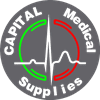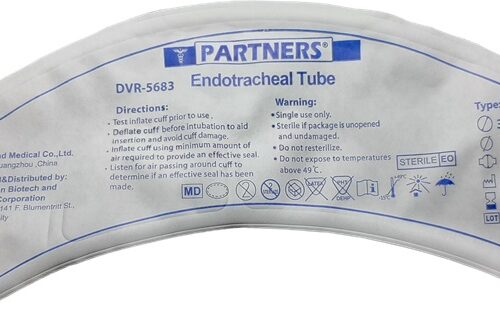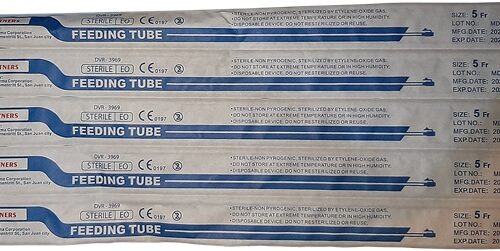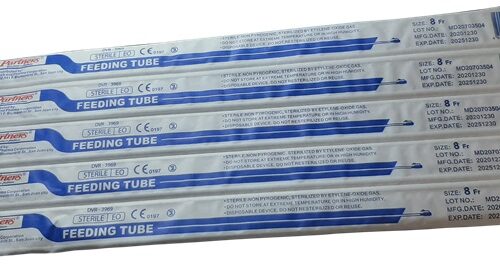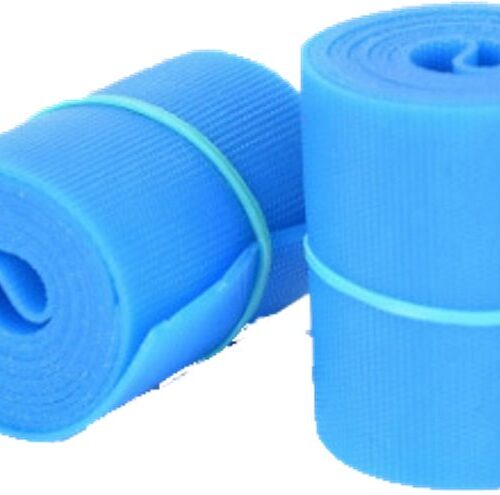Showing 145–160 of 444 results
-
Endotracheal Tube ID 2.5, Uncuffed, 10pcs
0₱473.00> PARTNERS
> Endotracheal Tube
> Single Use
> Sterile
> Fr 2.5 (Uncuffed)Direction:
Prior to intubation, deflate the cuff completely. After intubation, inflate the cuff using the minimum volume of air required to provide an effective seal.
immediately after cuff inflation, auscultate both lung fields. If breath sounds diminished over one or both field, adjust the tube required.
Endotracheal tube placement should be confirmed by viewing the position of the tube tip with a chest radiograph -
Endotracheal Tube ID 3.0, Uncuffed
0₱53.00> PARTNERS
> Endotracheal Tube
> Single Use
> Sterile
> Fr 3.0 (Uncuffed)Direction:
Prior to intubation, deflate the cuff completely. After intubation, inflate the cuff using the minimum volume of air required to provide an effective seal.
immediately after cuff inflation, auscultate both lung fields. If breath sounds diminished over one or both field, adjust the tube required.
Endotracheal tube placement should be confirmed by viewing the position of the tube tip with a chest radiograph -
Endotracheal Tube ID 3.0, Uncuffed, 10pcs
0₱473.00> PARTNERS
> Endotracheal Tube
> Single Use
> Sterile
> Fr 3.0 (Uncuffed)Direction:
Prior to intubation, deflate the cuff completely. After intubation, inflate the cuff using the minimum volume of air required to provide an effective seal.
immediately after cuff inflation, auscultate both lung fields. If breath sounds diminished over one or both field, adjust the tube required.
Endotracheal tube placement should be confirmed by viewing the position of the tube tip with a chest radiograph -
Feeding Tube Fr. 5
0₱16.00> PARTNERS
> Feeding Tube
> Fr.5
> Sterile
> Single use only
> CE 0197
> Non pyrogenic
> Do not resterilize
> Do not store at extreme temperature or in high humidityA feeding tube is a plastic tube that is used to bypass chewing and swallowing in a patient who is not able to eat or drink safely. These tubes can be used to deliver both food and fluids, and can also be used for providing medications when needed.
-
Feeding Tube Fr.8
0₱16.00> PARTNERS
> Feeding Tube
> Fr.8
> Sterile
> Single use only
> CE 0197
> Non pyrogenic
> Do not resterilize
> Do not store at extreme temperature or in high humidityA feeding tube is a plastic tube that is used to bypass chewing and swallowing in a patient who is not able to eat or drink safely. These tubes can be used to deliver both food and fluids, and can also be used for providing medications when needed.
-
Feeding Tube Fr.8, 100Pcs
0₱998.00> PARTNERS
> Feeding Tube
> Fr.8
> Sterile
> Single use only
> CE 0197
> Non pyrogenic
> Do not resterilize
> Do not store at extreme temperature or in high humidityA feeding tube is a plastic tube that is used to bypass chewing and swallowing in a patient who is not able to eat or drink safely. These tubes can be used to deliver both food and fluids, and can also be used for providing medications when needed.
-
-
Flat Torniquet Latex Blue, 10pcs
0₱105.00> Tourniquet
> Latex Free
> Color Blue
> 10 roll per/pck
> Good Quality
> 0.5 kg
> 8 cm
> emergency stop bleeding strap
> 100%Brand new and high qualityTourniquets are tight bands used to completely stop the blood flow to a wound. To control bleeding after an injury to a limb, tourniquets should ideally only be used
-
Flat Torniquet Latex Green, 10pcs
0₱105.00> Tourniquet
> Latex Free
> Color Green
> 10 roll per/pck
> Good Quality
> 0.5 kg
> 8 cm
> emergency stop bleeding strap
> 100%Brand new and high qualityTourniquets are tight bands used to completely stop the blood flow to a wound. To control bleeding after an injury to a limb, tourniquets should ideally only be used
-
Flat Torniquet Latex Violet, 10pcs
0₱105.00> Tourniquet
> Latex Free
> Color Purple
> 10 roll per/pck
> Good Quality
> 0.5 kg
> 8 cm
> emergency stop bleeding strap
> 100%Brand new and high qualityTourniquets are tight bands used to completely stop the blood flow to a wound. To control bleeding after an injury to a limb, tourniquets should ideally only be used
-
-
